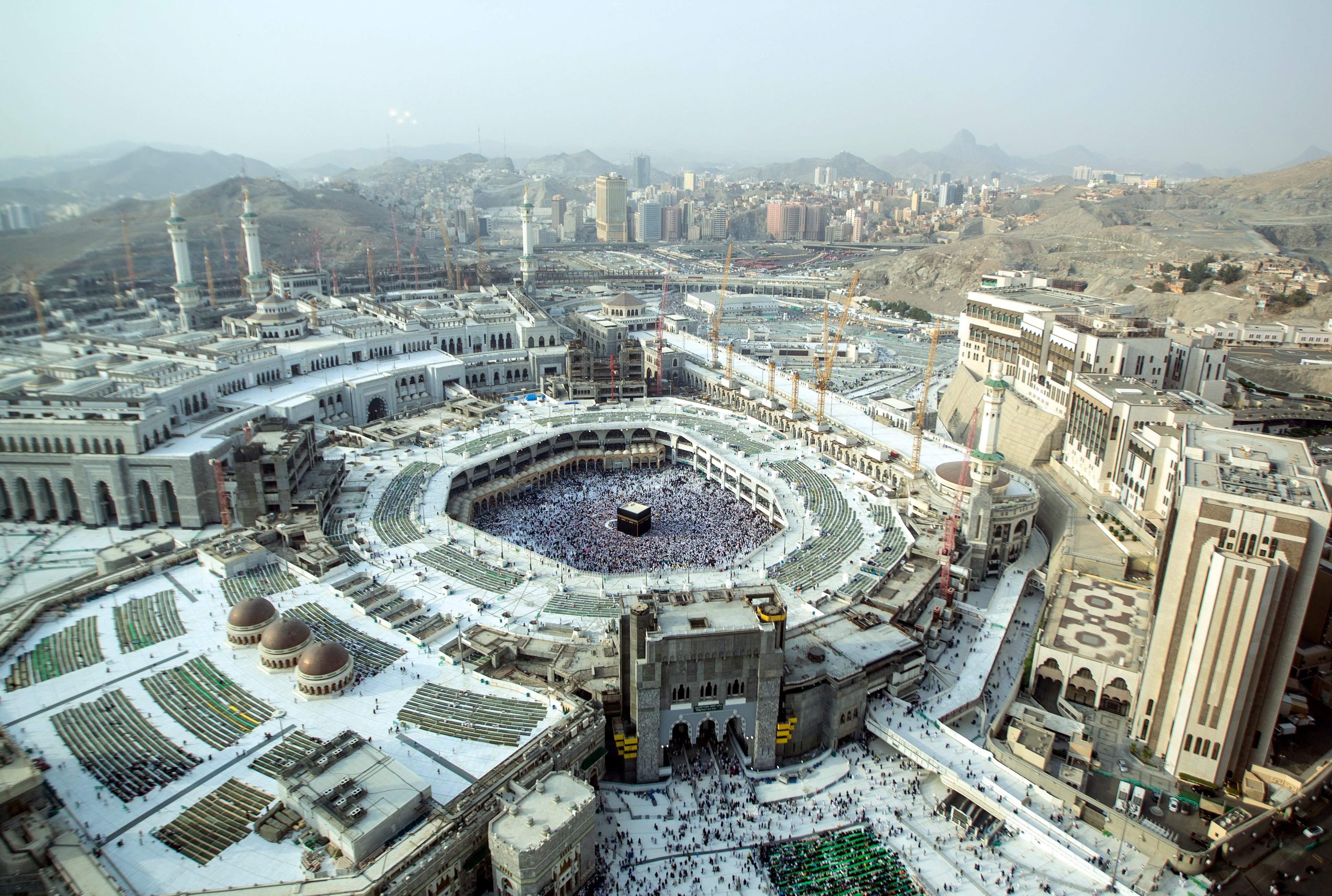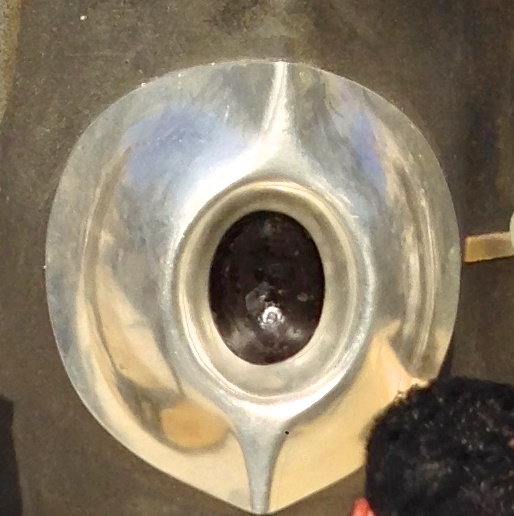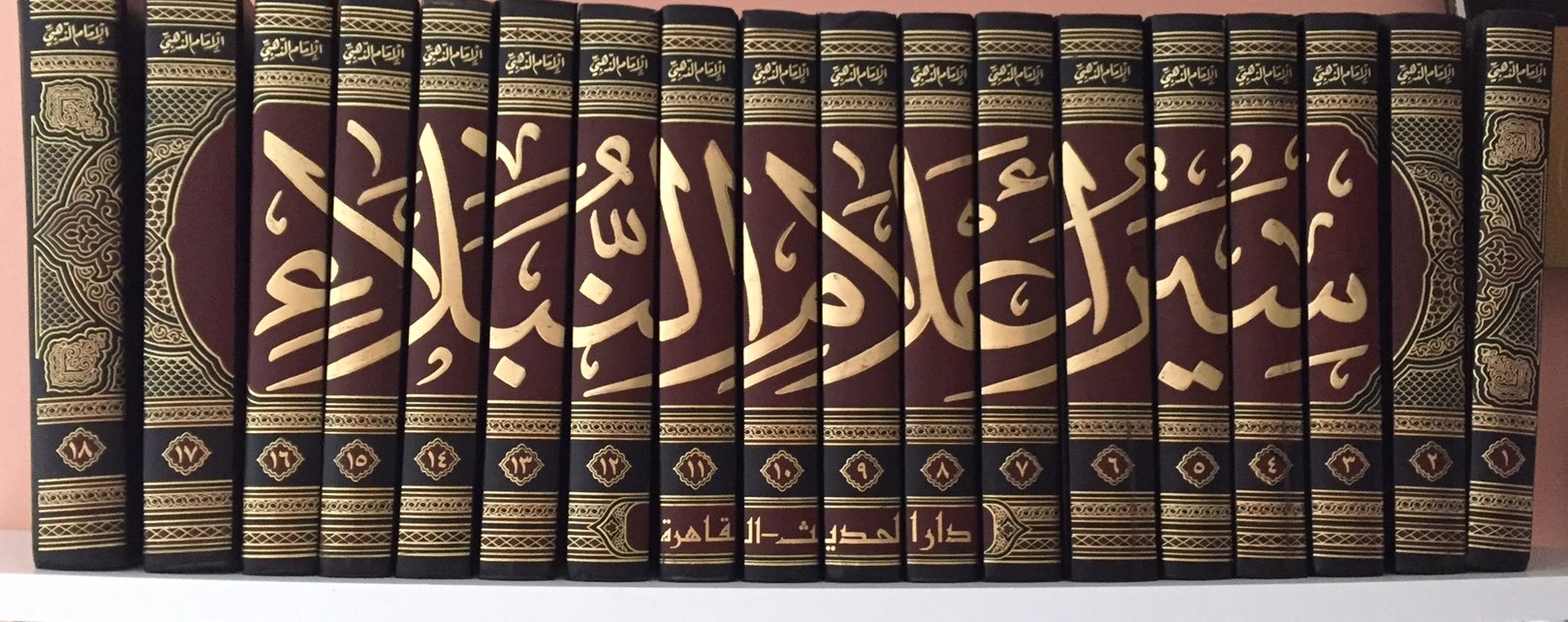|
Mukaththir Ibn Isa
Mukaththir ibn ‘Īsá ibn Fulaytah al-Ḥasanī al-‘Alawī ( ar, مكثر بن عيسى بن فليتة الحسني العلوي; d. 1203–1204) was the last Emir of Mecca from the sharifian Hawashim dynasty, reigning at least three times between 1176 and 1203. He was Mukaththir wiktionary:ibn, ibn Isa ibn Fulaytah, Isa ibn Fulaytah ibn Qasim, Fulaytah ibn Qasim ibn Abi Hashim, Qasim ibn Abu Hashim Muhammad ibn Ja'far, Abi Hashim Muhammad, and his ''nasab'' (paternal lineage) continues to Hasan ibn Ali, the grandson of Muhammad. On 2 Sha'ban 570 Hijri year, AH () Mukaththir's father died, and his brother Da'ud ibn Isa, Da'ud became Emir of Mecca. Less than a year later, on the night of 15 Rajab 571 AH (), Mukaththir deposed his brother and assumed the Emirate. On 15 Sha'ban 571 AH () Turanshah, the brother of Saladin, arrived in Mecca on his way to Syria (region), Syria. He summoned Mukaththir and Da'ud and made peace between them. In Dhu al-Hijjah of that year (June 1176) th ... [...More Info...] [...Related Items...] OR: [Wikipedia] [Google] [Baidu] |
Emir Of Mecca
Emir (; ar, أمير ' ), sometimes transliterated amir, amier, or ameer, is a word of Arabic origin that can refer to a male monarch, aristocrat, holder of high-ranking military or political office, or other person possessing actual or ceremonial authority. The title has a long history of use in the Arab World, East Africa, West Africa, Central Asia, and the Indian subcontinent. In the modern era, when used as a formal monarchical title, it is roughly synonymous with "prince", applicable both to a son of a hereditary monarch, and to a reigning monarch of a sovereign principality, namely an emirate. The feminine form is emira ( '), a cognate for "princess". Prior to its use as a monarchical title, the term "emir" was historically used to denote a "commander", "general", or "leader" (for example, Amir al-Mu'min). In contemporary usage, "emir" is also sometimes used as either an honorary or formal title for the head of an Islamic, or Arab (regardless of religion) organisation or ... [...More Info...] [...Related Items...] OR: [Wikipedia] [Google] [Baidu] |
Abu Kubais
Abu Qubays ( ar, جَبَل أَبُو قُبَيْس \ جَبَل أَبِي قُبَيْس, Jabal Abū Qubays / Jabal Abī Qubays) is a sacred mountain which resides on the eastern frontier of ''Al-Masjid Al-Haram'' in Makkah, in the Hejazi region of Saudi Arabia. Description Although the exact origin of its name is unknown, it is believed to be called ''Al-Amīn'' () in pagan times because the sacred Black Stone resided there according to Muslims. According to another report, this mountain was also called the ''Maghārat al-Kanz'' (, "Treasure Cave"), and this was believed to be the place where the first of men stayed and were buried after their death. According to tradition, this is the place where the Islamic Nabi, Prophet Muhammad performed the miracle of splitting the moon into two pieces and then re-attaching those pieces as demanded by the disbelievers of Makkah. See also * Geography of Saudi Arabia * Pilgrimage ** Hajj ** 'Umrah References External links Jabal ... [...More Info...] [...Related Items...] OR: [Wikipedia] [Google] [Baidu] |
Sharifs Of Mecca
The Sharif of Mecca ( ar, شريف مكة, Sharīf Makkah) or Hejaz ( ar, شريف الحجاز, Sharīf al-Ḥijāz, links=no) was the title of the leader of the Sharifate of Mecca, traditional steward of the holy cities of Mecca and Medina and the surrounding Hejaz. The term ''sharif'' is Arabic for "noble", "highborn", and is used to describe the descendants of the Prophet Muhammad's grandson al-Hassan ibn Ali. The Sharif was charged with protecting the cities and their environs and ensuring the safety of pilgrims performing the Hajj. The title is sometimes spelled Sheriff or Sherif, with the latter variant used, for example, by T. E. Lawrence in ''Seven Pillars of Wisdom''. The office of the Sharif of Mecca dates back to the late Abbasid era. Until 1200, the Sharifate was held by a member of the Hawashim clan, not to be confused with the larger clan of Banu Hashim from which all Sharifs claim descent. Descendants of the Banu Hashim continued to hold the position until the 2 ... [...More Info...] [...Related Items...] OR: [Wikipedia] [Google] [Baidu] |
12th-century Arab People
1 (one, unit, unity) is a number representing a single or the only entity. 1 is also a numerical digit and represents a single unit of counting or measurement. For example, a line segment of ''unit length'' is a line segment of length 1. In conventions of sign where zero is considered neither positive nor negative, 1 is the first and smallest positive integer. It is also sometimes considered the first of the infinite sequence of natural numbers, followed by 2, although by other definitions 1 is the second natural number, following 0. The fundamental mathematical property of 1 is to be a multiplicative identity, meaning that any number multiplied by 1 equals the same number. Most if not all properties of 1 can be deduced from this. In advanced mathematics, a multiplicative identity is often denoted 1, even if it is not a number. 1 is by convention not considered a prime number; this was not universally accepted until the mid-20th century. Additionally, 1 is the s ... [...More Info...] [...Related Items...] OR: [Wikipedia] [Google] [Baidu] |
1200s Deaths
1 (one, unit, unity) is a number representing a single or the only entity. 1 is also a numerical digit and represents a single unit of counting or measurement. For example, a line segment of ''unit length'' is a line segment of length 1. In conventions of sign where zero is considered neither positive nor negative, 1 is the first and smallest positive integer. It is also sometimes considered the first of the infinite sequence of natural numbers, followed by 2, although by other definitions 1 is the second natural number, following 0. The fundamental mathematical property of 1 is to be a multiplicative identity, meaning that any number multiplied by 1 equals the same number. Most if not all properties of 1 can be deduced from this. In advanced mathematics, a multiplicative identity is often denoted 1, even if it is not a number. 1 is by convention not considered a prime number; this was not universally accepted until the mid-20th century. Additionally, 1 is the ... [...More Info...] [...Related Items...] OR: [Wikipedia] [Google] [Baidu] |
Year Of Birth Unknown
A year or annus is the orbital period of a planetary body, for example, the Earth, moving in its orbit around the Sun. Due to the Earth's axial tilt, the course of a year sees the passing of the seasons, marked by change in weather, the hours of daylight, and, consequently, vegetation and soil fertility. In temperate and subpolar regions around the planet, four seasons are generally recognized: spring, summer, autumn and winter. In tropical and subtropical regions, several geographical sectors do not present defined seasons; but in the seasonal tropics, the annual wet and dry seasons are recognized and tracked. A calendar year is an approximation of the number of days of the Earth's orbital period, as counted in a given calendar. The Gregorian calendar, or modern calendar, presents its calendar year to be either a common year of 365 days or a leap year of 366 days, as do the Julian calendars. For the Gregorian calendar, the average length of the calendar year ( ... [...More Info...] [...Related Items...] OR: [Wikipedia] [Google] [Baidu] |
Wadi Nakhlah
Wadi ( ar, وَادِي, wādī), alternatively ''wād'' ( ar, وَاد), North African Arabic Oued, is the Arabic term traditionally referring to a valley. In some instances, it may refer to a wet (ephemeral) riverbed that contains water only when heavy rain occurs. Etymology The term ' is very widely found in Arabic toponyms. Some Spanish toponyms are derived from Andalusian Arabic where ' was used to mean a permanent river, for example: Guadalcanal from ''wādī al-qanāl'' ( ar, وَادِي الْقَنَال, "river of refreshment stalls"), Guadalajara from ''wādī al-ḥijārah'' ( ar, وَادِي الْحِجَارَة, "river of stones"), or Guadalquivir, from ''al-wādī al-kabīr'' ( ar, اَلْوَادِي الْكَبِير, "the great river"). General morphology and processes Wadis are located on gently sloping, nearly flat parts of deserts; commonly they begin on the distal portions of alluvial fans and extend to inland sabkhas or dry lakes. In basin and ran ... [...More Info...] [...Related Items...] OR: [Wikipedia] [Google] [Baidu] |
Qatadah Ibn Idris
Abu Aziz Qatada ibn Idris al-Hasani al-Alawi al-Yanbu'i al-Makki ( ar, أبو عزيز قتادة بن إدريس الحسني العلوي الينبعى المكي, Abū ʿAzīz Qatāda ibn Idrīs al-Ḥasanī al-ʿAlawī al-Yanbuʿī al-Makkī; d. 1220/1221) was the Sharif of Mecca, reigning from 1201 to 1220/1221. He also founded the Banu Qatadah dynasty and established a tradition of sharifs descended from him to rule Mecca which lasted until the office was abolished in 1925.Salibi, 1998, p.55. Regarding his sectarian denomination, Qatadah ibn Idris was a Shi'ite. Early life Qatada's date of birth is not recorded, but based on differing reports of his age at death he was born circa either the early 1130s or the early 1150s. He claimed to be a sharif — apparently a descendant of Muhammad's grandson Hasan ibn Ali, in the fifteenth degree. His claimed genealogy is: Qatada ibn Idris ibn Muta'in ibn Abd al-Karim ibn Isa ibn Husayn ibn Sulayman ibn Ali ibn Abd Allah ibn ibn ... [...More Info...] [...Related Items...] OR: [Wikipedia] [Google] [Baidu] |
Black Stone
The Black Stone ( ar, ٱلْحَجَرُ ٱلْأَسْوَد, ', 'Black Stone') is a rock set into the eastern corner of the Kaaba, the ancient building in the center of the Grand Mosque in Mecca, Saudi Arabia. It is revered by Muslims as an Islamic relic which, according to Muslim tradition, dates back to the time of Adam and Eve. The stone was venerated at the Kaaba in pre-Islamic pagan times. According to Islamic tradition, it was set intact into the Kaaba's wall by the Islamic prophet Muhammad in 605 CE, five years before his first revelation. Since then, it has been broken into fragments and is now cemented into a silver frame in the side of the Kaaba. Its physical appearance is that of a fragmented dark rock, polished smooth by the hands of pilgrims. Islamic tradition holds that it fell from heaven as a guide for Adam and Eve to build an altar. It has often been described as a meteorite. Muslim pilgrims circle the Kaaba as a part of the ''tawaf'' ritual during the ''ha ... [...More Info...] [...Related Items...] OR: [Wikipedia] [Google] [Baidu] |
Kaaba
The Kaaba (, ), also spelled Ka'bah or Kabah, sometimes referred to as al-Kaʿbah al-Musharrafah ( ar, ٱلْكَعْبَة ٱلْمُشَرَّفَة, lit=Honored Ka'bah, links=no, translit=al-Kaʿbah al-Musharrafah), is a building at the center of Islam's most important mosque, the Masjid al-Haram in Mecca, Saudi Arabia. It is the most Holiest sites in Islam, sacred site in Islam.Wensinck, A. J; Kaʿba. Encyclopaedia of Islam IV p. 317 It is considered by Muslims to be the ''Bayt Allah'' ( ar, بَيْت ٱللَّٰه, lit=House of God) and is the qibla ( ar, قِبْلَة, links=no, direction of prayer) for Muslims around the world when performing salah. The current structure was built after the original building was damaged during the Siege of Mecca (683), siege of Mecca in 683. In Early Islam (other), early Islam, Muslims faced in the general direction of Jerusalem as the qibla in their prayers before changing the direction to face the Kaaba, believed by Musli ... [...More Info...] [...Related Items...] OR: [Wikipedia] [Google] [Baidu] |
Al-Dhahabi
Shams ad-Dīn adh-Dhahabī (), also known as Shams ad-Dīn Abū ʿAbdillāh Muḥammad ibn Aḥmad ibn ʿUthmān ibn Qāymāẓ ibn ʿAbdillāh at-Turkumānī al-Fāriqī ad-Dimashqī (5 October 1274 – 3 February 1348) was an Islamic historian and Hadith expert. Life Of Arab descent, Adh-Dhahabi was born in Damascus. His name, ibn adh-Dhahabi (son of the goldsmith), reveals his father's profession. He began his study of hadith at age eighteen, travelling from Damascus to Baalbek, Homs, Hama, Aleppo, Nabulus, Cairo, Alexandria, Jerusalem, Hijaz, and elsewhere, before returning to Damascus to teach and write. He authored many works and was widely renown as a perspicuous critic and expert examiner of the hadith. He wrote an encyclopaedic biographical history and was the foremost authority on the canonical readings of the Qur'an. Some of his teachers were women. At Baalbek, Zaynab bint ʿUmar b. al-Kindī was among his most influential teachers. Adh-Dhahabi lost his sight two ye ... [...More Info...] [...Related Items...] OR: [Wikipedia] [Google] [Baidu] |
.jpg)






